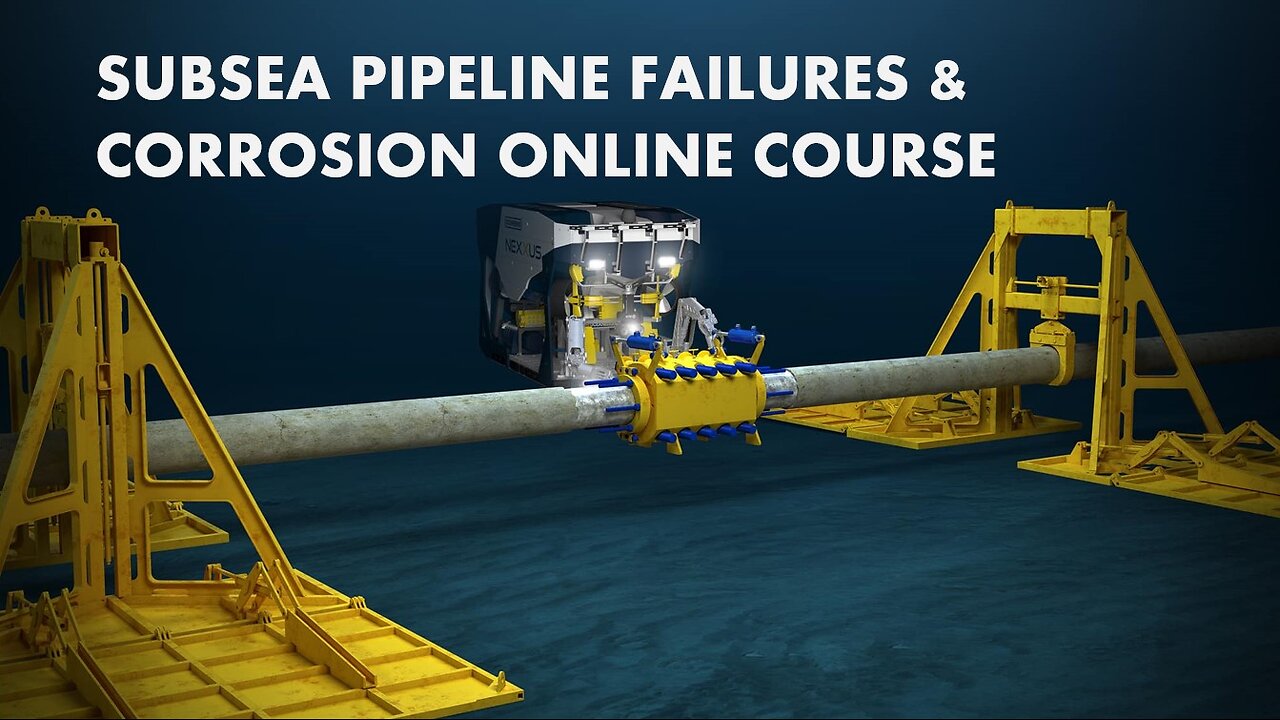Premium Only Content

Subsea Pipeline Failures & Corrosion Online Course
Pipelines are an essential part of the oil and gas industry as they are the main means of transportation. As the offshore technology advances, subsea pipelines are being operated in more demanding environments. For the pipelines to operate efficiently, they have to be carefully designed. One of the main threats to the integrity of the pipeline is corrosion, which has caused many failures. Corrosion in subsea pipelines has different forms and understanding their mechanisms is an important step in inhibiting them and decreasing their rate of occurrence. As corrosion is unavoidable, it is beneficial to be able to calculate the corrosion rate and the corrosion allowance. By obtaining the results of the corrosion rate it becomes clearer which type of group of steel to consider for the fabrication of the pipeline.
Subsea engineers battle harsh, corroding marine environments, as well as corrosive fluids that flow inside the pipeline, leaving pipelines extremely susceptible to damage. There are also many variables to consider when dissecting pipeline systems, such as differing installation processes, diameter and thickness of a pipeline, aging in hardware and materials failure. For instance, rigid pipelines are often made of carbon steel and are stiff and hard to install. In contrast, flexible pipelines are relatively easier and cheaper to install but difficult to maintain.
For full videos you can visit this link :
https://drive.google.com/file/d/1mXXnA0XA6S45RbohHPhX3G1OPORLt8X3/view?usp=sharing
and you will be directed to a google drive link where you can download all files of this course
https://drive.google.com/file/d/1y6FaD0mpj9wjR0md6sj9WcK543kGKIUR/view?usp=drive_link
-
 LIVE
LIVE
The Bubba Army
20 hours agoIs Killing The New Trend??! - Bubba the Love Sponge® Show | 10/31/25
4,724 watching -
 2:25:16
2:25:16
Demons Row
11 hours agoEx Hells Angels MC President: Charles “Peewee”Goldsmith (Full Interview)
1092 -
 3:35
3:35
Gamazda
9 hours ago $0.26 earnedThe Darkest Piano Theme?
3658 -
 13:42
13:42
Nate The Lawyer
17 hours ago $0.38 earnedINSANE Judge REMOVED For Lying Under Oath, Insurance Fraud & Stolen Valor
3608 -
 38:32
38:32
Code Blue Cam
1 day agoHow Police Stopped a Potential Church Massacre...
26.4K7 -
 24:26
24:26
Actual Justice Warrior
1 day agoWelfare Queens RAGE OUT Over Food Stamp Cuts
8.03K29 -
 3:05:11
3:05:11
Inverted World Live
9 hours agoThe Halloween Special with Drea De Matteo and Sam Tripoli | Ep. 133
352K15 -
 2:57:52
2:57:52
Laura Loomer
12 hours agoEP154: Naturalized US Navy Medic From GAZA Exposed For Ties To Hamas
41.8K29 -
 35:45
35:45
Stephen Gardner
15 hours ago🔴BREAKING: Election Auditor EXPOSES Democrat Election Fraud Evidence!
44.1K61 -
 15:48
15:48
Sponsored By Jesus Podcast
19 hours agoHow to Stop Being JEALOUS | When Comparison Steals Your Joy
15.7K12